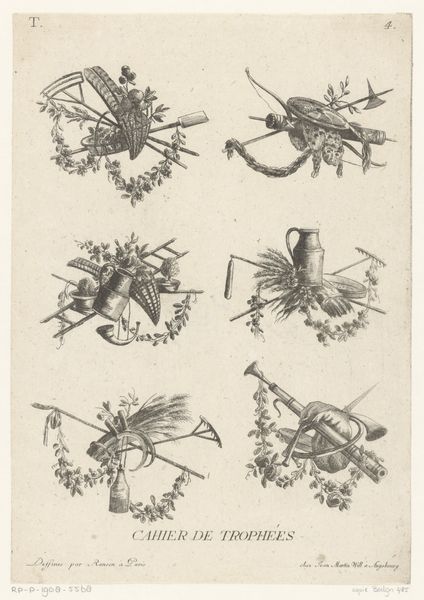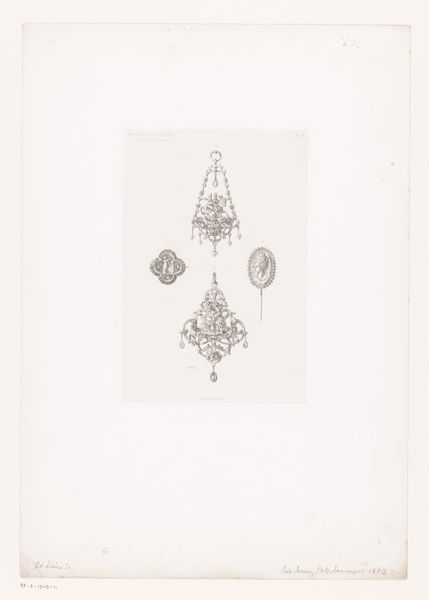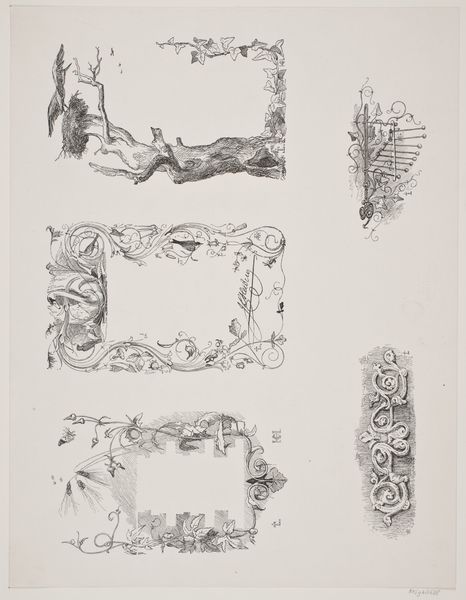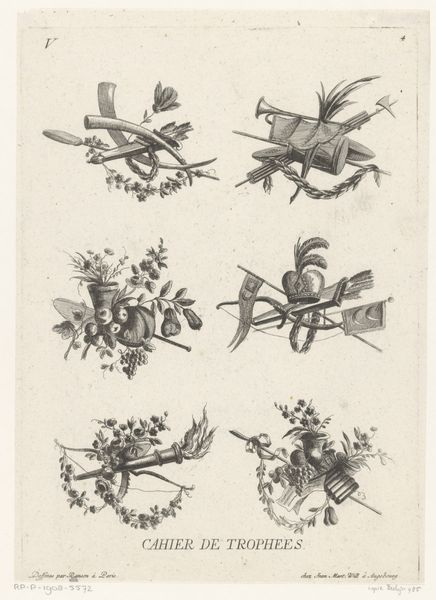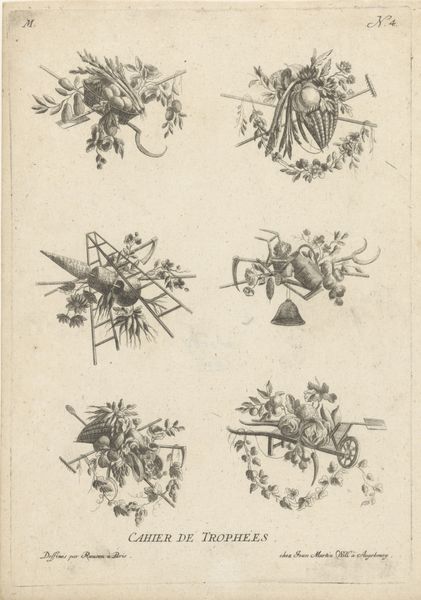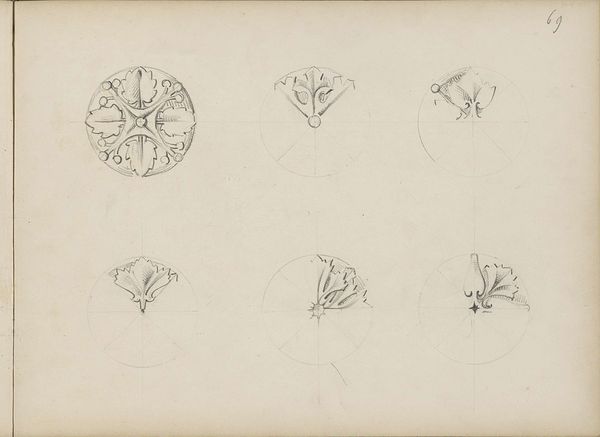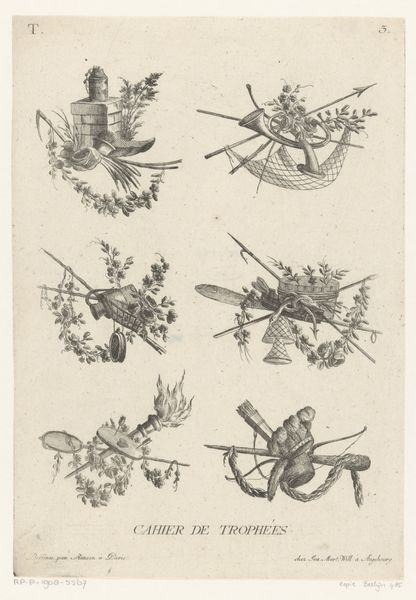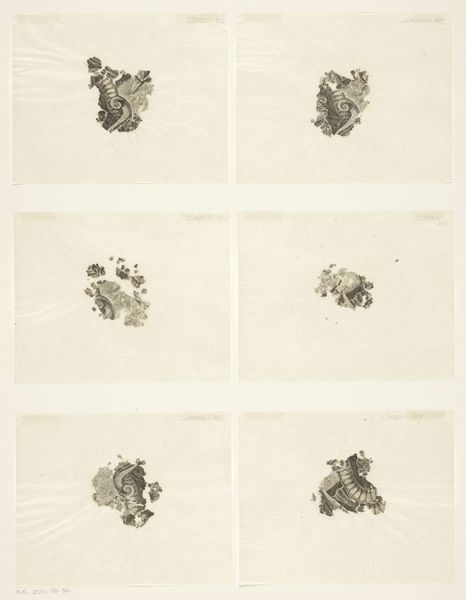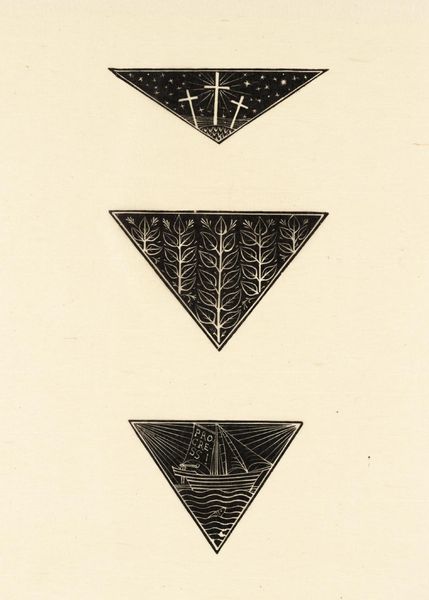
Seks træsnit efter J. Th. Lundbye. Medlemsblad fra Den Danske Radeerforening 1840s
0:00
0:00
drawing, graphic-art, print, etching, woodcut
#
drawing
#
graphic-art
#
medieval
# print
#
etching
#
etching
#
organic drawing style
#
geometric
#
woodcut
Dimensions: 338 mm (height) x 263 mm (width) (bladmaal)
Curator: Looking at this fascinating graphic art, a print crafted in the 1840s, you see a woodcut after J.Th. Lundbye titled "Seks traesnit efter J. Th. Lundbye. Medlemsblad fra Den Danske Radeerforening," or Six Wood Engravings After J. Th. Lundbye. Editor: My immediate impression is of organized symbolism. Each little vignette seems carefully considered, almost heraldic. There’s a touch of the medieval in the detailing. A skull, tools and flowers and religious elements... It’s all quite curious. Curator: Absolutely, the dense imagery definitely points towards a fascination with emblems. We can trace that interest back to medieval bestiaries and heraldry. Here, each little engraving probably acted as a symbol intended to project a set of core ideas. I am wondering, do they work together? Are they intended as a unit? Editor: It's an interesting question. Individually, they work quite well, creating self-contained worlds within those tiny frames. But whether they unite to form a larger narrative feels less defined. Each piece seems deliberately chosen to offer something different, creating a medley of potent signifiers. Perhaps a look at who Henneberg was might help contextualise things. Curator: H.C. Henneberg, a prominent name within the Danish cultural and artistic scenes of the time. Considering the socio-political climate in Denmark, what were the common sets of iconography artists and engravers could call on in this period, when Denmark was trying to construct a national identity? Was there a prevailing mood or set of symbols? Editor: Well, the period of national romanticism was really kicking into gear, so landscapes, ancient folklore and historical references were all common. Here, we seem to see an embrace of medievalism – evident through this almost archeological fascination for tools, sacred objects, skeletal remains and heraldic compositions. All elements loaded with tradition. Curator: Yes, by reaching into this well of images, they weren’t merely decorating a page; they were invoking cultural memory, tying the present to a constructed, idealized past. In psychology, the arrangement and focus would also be extremely important, particularly with this visual language. It tells me the creator wished to evoke nostalgia in his peers through this shared visual identity. Editor: It really speaks to the power of symbols during periods of rapid change and nation-building, doesn’t it? Curator: Indeed, an artistic assertion of values, anxieties, and aspirations rendered in a visual vocabulary, meticulously engraved to resonate with the viewer's own historical consciousness.
Comments
No comments
Be the first to comment and join the conversation on the ultimate creative platform.
